The Unchartered Waters of Purchasing Enterprise Software
Kerry Geffert
Product Evangelist, Terra Dotta
In providing management training to new and aspiring managers in international education, it became clear that many had become what Catherine Born, formerly of NAFSA, calls “accidental managers.” Solve a SEVIS issue? No problem. Coordinate a faculty-led study abroad program? Piece of cake. But do managerial “stuff”? Equivalent to learning a new language, without much training.
International educators tend to be people persons. So when managerial duties call for budgeting decisions or procurement of something like software, it may be new territory. The purchase of enterprise software can be vastly different than budgeting for an orientation program, and certainly demands skills beyond our well-honed cross-cultural communication skills.
We at Terra Dotta understand that an office software purchase may be one of the largest purchases an international office makes. We understand that the purchase process likely involves several campus offices and requires time for analysis, review, and coordination. However, until recently our understanding has been mostly anecdotal. We have stories of how colleagues made their software license purchase happen. But little data. Until now. Earlier this year, we conducted a short survey of Terra Dotta clients to learn more about their experiences with their software purchases. In general, we sought to learn how institutions have managed to purchase their Terra Dotta software. The results provided some interesting outcomes.
An email was sent to 430 Terra Dotta clients with licenses for study abroad, international student & scholar services, risk management, or agreements management. The email invited recipients to complete a web-based survey. The survey was designed to provide a better understanding of our clients based on these questions:
- What type of institution was responding based on highest degree awarded?
- What licenses have clients purchased?
- How long did it take for the purchase of their TD software?
- Who made the final decision to purchase?
- How was the purchase funded?
- What were the obstacles that needed to be overcome?
- What can others learn from their experiences?
A total of 88 complete responses were received, or 20% of the total recipients. The responses provided the following illuminations.
Types of Institutions
Over 60% of the respondents represent institutions granting degrees at the doctoral level. Another 20% award up to the Master’s degrees. The predominance of graduate degree granting institutions could imply that the additional survey findings are more applicable to larger institutions that may have more robust authorization procedures. It may also be the case that the international offices that obtained TD licenses are larger offices with larger budgets.
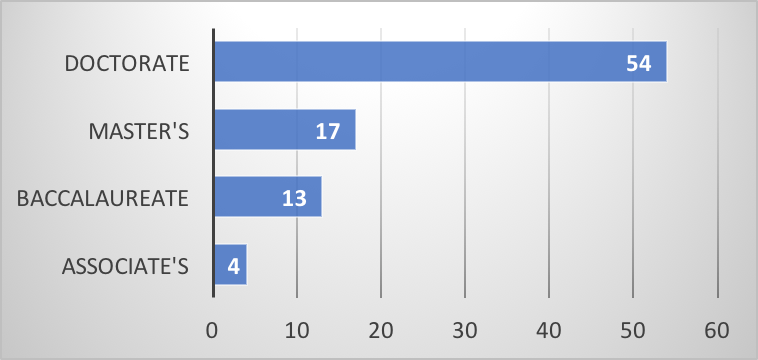
Licenses
Almost all respondents came from offices with a license for TD for Study Abroad. Since study abroad is the area for which Terra Dotta is most widely recognized, this response is not unexpected. In addition, many institutions hold licenses for more than one Terra Dotta solution; therefore, somewhere between 11% and 23% of the respondents were commenting on their experiences with at least two Terra Dotta license procurements.
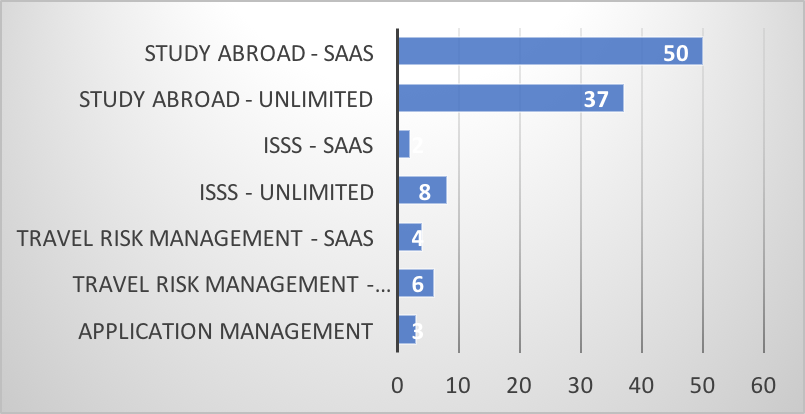
Purchasing Timelines
Institutions of higher education are known for the length of time that can be required for purchases. Software purchases are not immune from these timeframes, particularly because of the various offices that may be involved in the decision. Therefore, it is somewhat heartening to see that the time from initial inquiry to purchase is one year or less for 65% of the respondents, with over one-third of those being made within six months. There appear to be no significant differences in the timeline distribution when considering the highest degree awarded.
The implication for offices is consideration of the budget cycle. In one sense, it appears quite possible for institutions to purchase within their current budget cycle; however, as we will see later, consideration must also be given to the necessary sign-offs – in addition to the availability of funds. For others, scheduling into the next budget year may allow for planning of both support and funding.
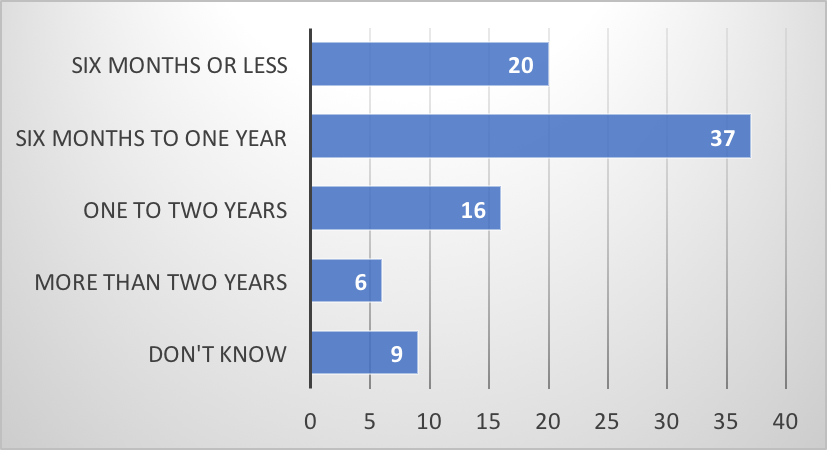
Approval Levels
Clearly, the final approval of the Provost or a Vice President is the most common among institutions with 65% of respondents indicating thus. This position often has the broadest authority and understanding of an institution’s day-to-day operational expenditures.
The next largest group of approvers, albeit at only 12.5% of the respondents, is the director of the international office. It proved useful to look at the highest degree offered by these respondents’ institutions. All but one institution offers degrees at the doctoral level. While not a given, it appears that only more comprehensive institutions, which may have larger international offices, allow the decision to be made by a director, who may be empowered with greater budgetary authority.
There were no similar commonalities of highest degree offered when decisions are required at the remaining levels – President, Dean or IT Director. The response in each of these categories was small; therefore, little can be deduced beyond that general lack of commonality.
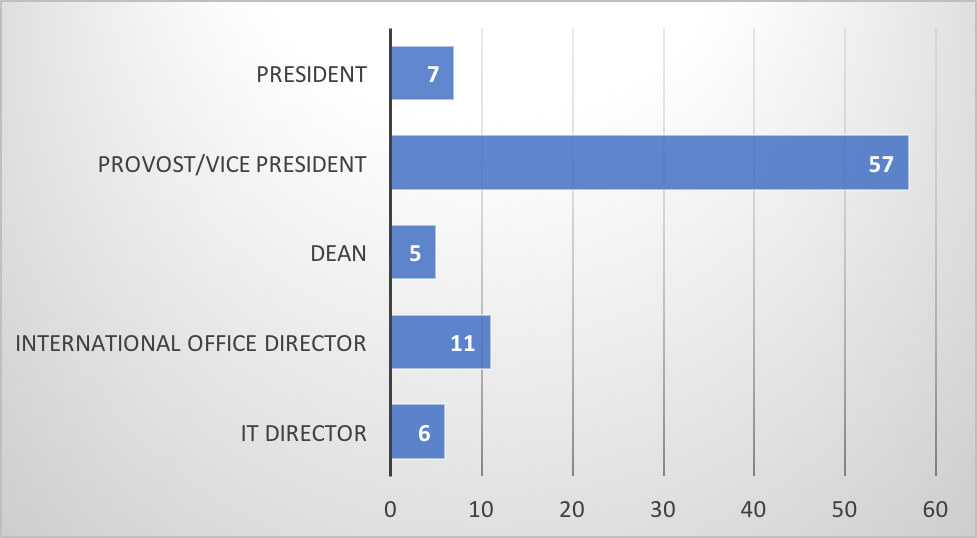
Funding Sources
Funding the purchase of something like enterprise software for an office may require creativity. There can be multiple sources of funding on a campus; however, institutional size, culture and policy can dictate availability of tapping those sources. Based upon survey responses, access to multiple funding sources is not as prevalent as might be expected.
At doctoral institutions, just over half (55%) of the respondents indicated that funding came from a single source with divisional and departmental sources being the most common. Those accessing multiple sources tap two to four different sources, often built around divisional, department and/or office funds.
At the Master’s level, three quarters of funding comes from a sole source. These sole sources are somewhat evenly distributed among divisional, departmental, office, special project funds, and student application fees. Respondents from institutions offering Baccalaureate degrees are similar to those at the Master’s level with 85% accessing a single funding source. However, most utilize divisional or departmental funds.
Three sources are worth special note. General student fees are infrequently utilized, and usually are accessed in conjunction with other sources. Student application fees are similarly one of several combined sources, except at Master’s level institutions where they were slightly more common as a single source. Notably missing from most sources are institutional IT funds; only one respondent indicated this as the sole source. Whether this means that institutions do not offer seed funds through their IT departments is a topic for further investigation.
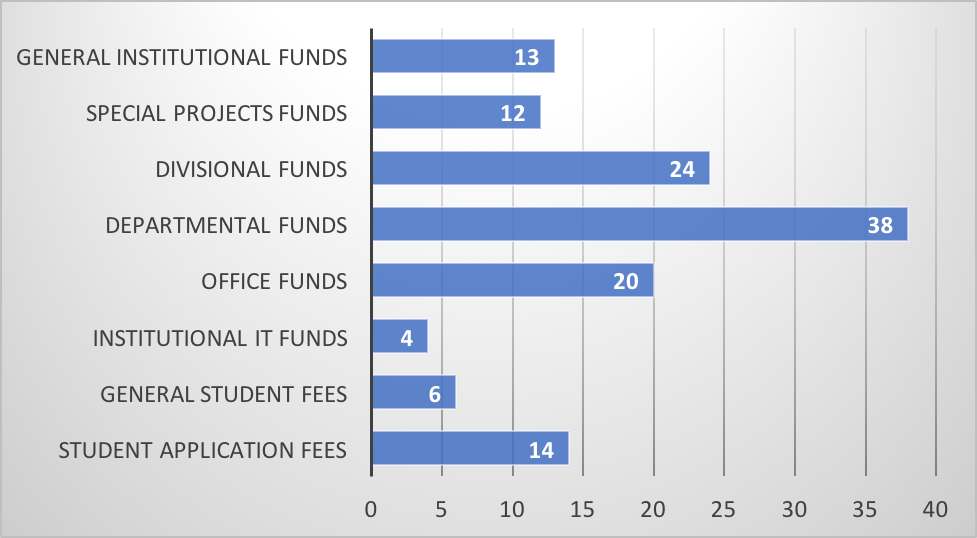
Obstacles to Overcome
Two themes emerged from open comments regarding obstacles to making the Terra Dotta purchase. The first is the obvious one – financial. However, while total cost – for both the initial purchase and ongoing fees – was a concern on some campuses, creating financial justifications for those less familiar with the workings of the international office were just as common. This is particularly relevant when funding sources lie outside the office or departmental structure.
The other theme centered around data security. Campus IT offices are understandably concerned about protecting data, and thus are skeptical of any external integration. Risk assessments, impact assessments, and documentation are crucial to obtaining the support of technology offices since they will be actively involved in an integrated implementation.
Final Observations
Regardless of the campus size, purchase of an enterprise software system is a major undertaking. Several respondents advised identifying all possible stakeholders to include them early in the decision-making process. Key supporters include the IT department, the Registrar’s Office, and any office that may be called upon to fund the purchase. Justifications that connect to best practices and risk management play important roles, particularly for those less familiar with the world of international education. Results from this survey may be helpful in initial consideration of likely funding options and the required approval level.
Survey respondents also recommended being realistic. It is important to understand an institution’s culture, and both written and unwritten procedures. Are there institutional deadlines or timelines? How important are referrals? They advise looking for windows of opportunity – a special grant, end-of-fiscal-year funds, or a strategic funding program. Finally, respondents’ comments encourage taking the long view. Understanding the post-purchase phase acknowledges that setup will take time and appropriate training is essential.
Above all, responses point to the need for networking and persistence. Some will be fortunate to move through purchasing quickly and with broad support. But for what is likely the majority, the process will take longer than desired and require an initial commitment of time and energy. This is where your Terra Dotta Business Development Representative can assist you. They are experienced in the nuances of higher education, and can assist you with navigating what may be uncharted waters.



